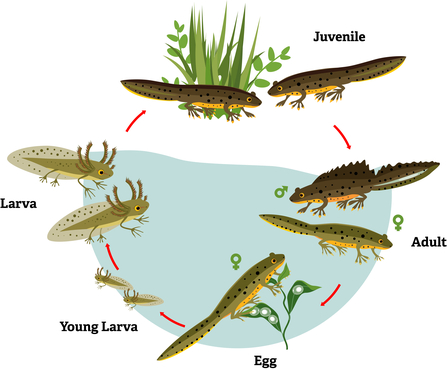Great crested newts are a European protected species, meaning they are protected by law, as well as their eggs, breeding sites and resting places. Unfortunately, like many UK species, they have experienced a considerable decline in population; a direct consequence of the degradation and destruction of freshwater pond habitats. The negative correlation is highlighted by the disappearance of one third of all UK ponds over the last 50 years.
The life cycle of our largest native newt can be scuppered at each stage. Optimum conditions are required for their successful breeding, egg-laying, foraging, migrating and overwintering. However, natural processes of plant succession and silt accumulation can become a pond’s demise. The collection of deciduous debris decomposing in the pond depths decreases the volume of water, and therefore the space needed for male great crested newts to display their flamboyant courtship behaviour.








